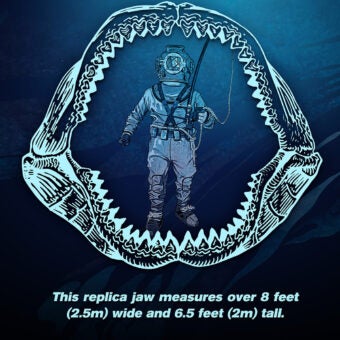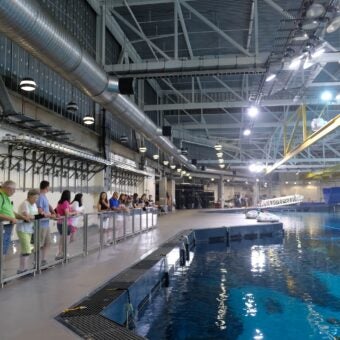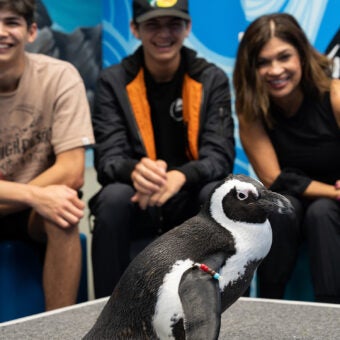-
Size
10 inches (25 cm) -
Diet
Zooplankton and benthic algae -
Range
Indo-Pacific -
Habitat
Reef-associated species
Physical Characteristics
- Easily recognized by its bright blue coloration with distinct black markings. Has a yellow tail with black upper and lower margins.
- As with all surgeonfish, this species has sharp spines on both sides of the caudal peduncle (where the caudal fin joins the fish’s body). The spines are mildly venomous in this species.
- Can grow to 10 inches (25 cm) in length.
Animal Fact
When alarmed, the palette surgeonfish will wedge itself tightly among coral branches.
Diet / Feeding
- Diet consists of zooplankton and benthic algae.
Range / Habitat
- Occurs in the Indo-Pacific from East Africa to the Line Islands, Japan, the southern Great Barrier Reef, New Caledonia, and Samoa. Also seen throughout Micronesia and from the Gilbert Islands (Kiribati), Mariana Islands and Mascarene Islands.
- Relatively uncommon and highly localized throughout most of Micronesia.
- Reef-associated species occurring at depths ranging from about 6-130 feet (2-40 m).
- Adults are encountered in loose aggregations near the bottom over current-swept terraces of seaward reefs.
- Juveniles and sub-adults typically appear in groups in clear reef areas or channels where there is substantial current. In addition, the juvenile is typically secretive and found near or within Acropora coral thickets.
Reproduction & Growth
- Oviparous: egg-laying species.
Conservation Status
- “Least Concern” on the IUCN Red List.
Additional Information
- People should use extreme caution when handling this fish. The spines on either side of the caudal peduncle may cause deep puncture wounds leading to infection.
- The only species in its genus.
- When alarmed, it will wedge itself tightly among the coral branches, making it easy for divers to collect.
- A popular and hardy aquarium fish.
Sources
- Micronesian Reef Fishes. Myers, R. F.
- Fishes of the Great Barrier Reef and Coral Sea. Randall, J. E.; Allen, G. R. and Steene, R. C.
- www.fishbase.org
- www.iucnredlist.org





